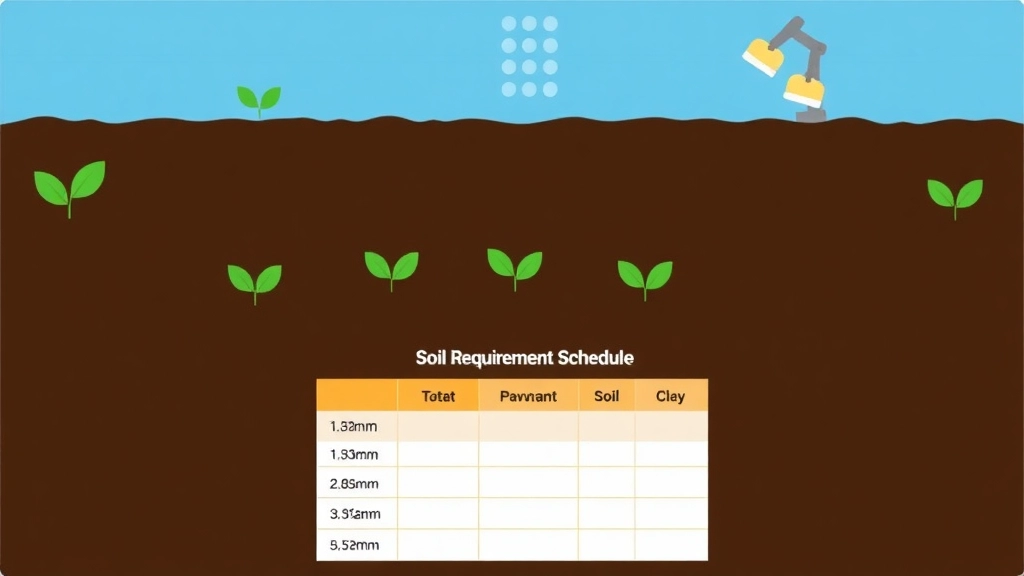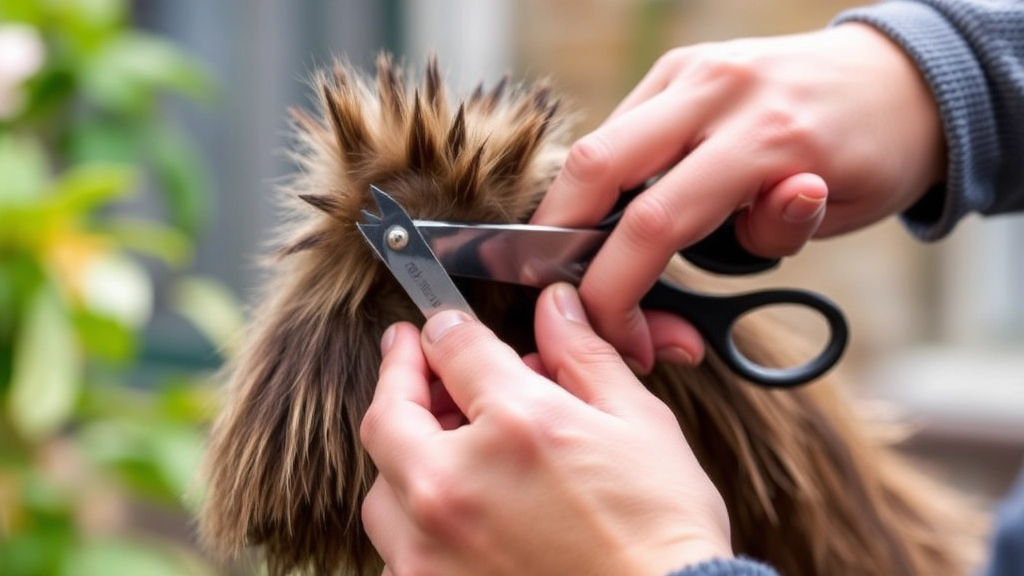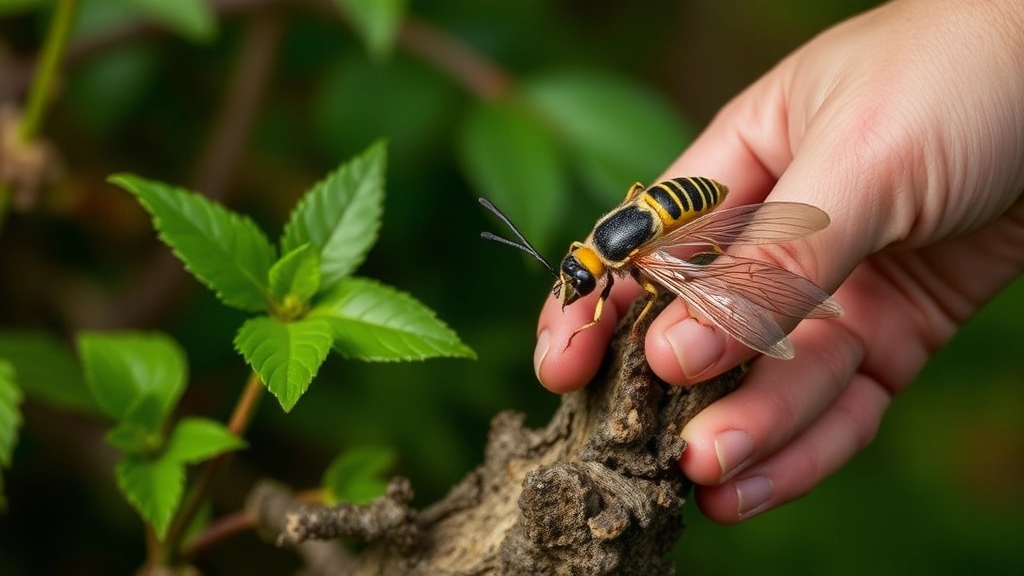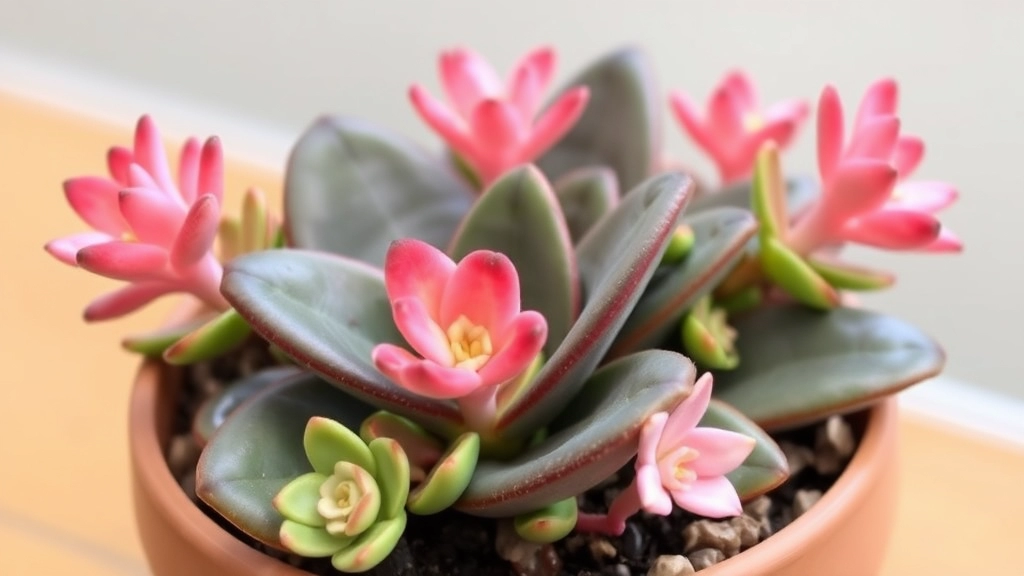Caring for Kalanchoe Brasiliensis
Caring for a Kalanchoe Brasiliensis can be a rewarding experience if you know the basics. This unique succulent thrives with the right balance of light, water, and nutrients. Let’s dive into the essentials to ensure your Kalanchoe Brasiliensis remains vibrant and healthy.
Light Requirements
First, place your plant in a spot with plenty of indirect sunlight. Too much direct light can scorch the leaves, while too little can stunt its growth.
Watering Guidelines
Watering should be done sparingly; wait until the soil is completely dry before giving it a good soak. Also, use well-draining soil to prevent root rot.
Maintenance Tips
Regularly check for pests and trim any dead leaves to keep your plant looking its best.
When it comes to growing Kalanchoe Brasiliensis, many enthusiasts often wonder about the best light and temperature conditions. This succulent thrives in bright, indirect sunlight, making it essential to position it near a window where it can soak up those rays without being scorched.
### Light Requirements:
– **Bright, Indirect Sunlight**: Aim for 6-8 hours of light daily.
– **Avoid Direct Sun**: Too much direct sunlight can lead to leaf burn.
– **Rotation**: Rotate your plant occasionally to ensure even growth.
### Temperature Preferences:
Kalanchoe Brasiliensis prefers a warm environment.
– **Ideal Temperature Range**: 20-25°C (68-77°F) during the day.
– **Nighttime Temperature**: It can tolerate cooler nights, down to 10°C (50°F).
– **Avoid Cold Drafts**: Protect your plant from sudden temperature changes and cold drafts.
To learn more about different species of Kalanchoe, check out [Explore Different Kalanchoe Species for Your Garden](https://planthq.org/explore-different-kalanchoe-species-for-your-garden/). For comprehensive care tips, you might also find the [Complete Care Guide for Kalanchoe Blossfeldiana Succulent](https://planthq.org/complete-care-guide-for-kalanchoe-blossfeldiana-succulent/) helpful.
Watering Schedule and Soil Requirements

So, you’ve got your Kalanchoe Brasiliensis, and now you’re probably wondering, “How much water does it really need?”
Let’s dive right in.
Watering Schedule
- Frequency Matters: Kalanchoe loves a good drink, but it also hates sitting in water. Aim to water it every 2-3 weeks.
- Check the Soil: Before you water, poke your finger into the soil. If it feels dry an inch down, it’s time to give it some water.
- Seasonal Adjustments: In the winter, cut back on watering. The plant goes dormant and needs less moisture.
Soil Requirements
- Well-Draining Soil: The key to a happy Kalanchoe is well-draining soil. A cactus mix works wonders, or you can make your own by mixing potting soil with sand or perlite.
- pH Level: Aim for a slightly acidic to neutral pH, around 6.0 to 7.0. This keeps your plant thriving.
- Pot Choice: Choose pots with drainage holes. This helps prevent root rot, which is a common issue for Kalanchoe.
Quick Tips
- Water less in winter.
- Use cactus mix or a DIY blend.
- Always check soil moisture before watering.
When it comes to nurturing Kalanchoe brasiliensis, understanding the right fertilization practices can be a game changer. Many plant enthusiasts often grapple with questions like, “How often should I fertilize?” or “What type of fertiliser is best?”
For optimal growth, I recommend using a balanced, water-soluble fertiliser. Look for a formula with equal parts nitrogen, phosphorus, and potassium (NPK), such as 20-20-20.
– **Frequency**: Fertilize every 4-6 weeks during the growing season (spring and summer).
– **Dilution**: Always dilute the fertiliser to half the recommended strength to prevent root burn.
If you prefer organic methods, consider using:
– **Compost Tea**: Rich in nutrients, it can be applied every month.
– **Fish Emulsion**: Great for a quick nutrient boost, apply every 6-8 weeks.
Keep an eye out for signs that your Kalanchoe may need a nutrient boost:
– **Yellowing Leaves**: Indicates nitrogen deficiency.
– **Stunted Growth**: Could mean a lack of essential nutrients.
Timing your fertilisation is crucial.
– **Spring Awakening**: Begin fertilising in early spring as the plant comes out of dormancy.
– **Autumn Caution**: Reduce or stop fertilising in autumn to prepare the plant for winter dormancy.
For more detailed care instructions, you can refer to the [complete guide to kalanchoe mother of thousands care and propagation](https://planthq.org/complete-guide-to-kalanchoe-mother-of-thousands-care-propagation/). Additionally, if you’re interested in exploring different types of Kalanchoe, check out the [top kalanchoe succulent varieties and care tips](https://planthq.org/top-kalanchoe-succulent-varieties-and-care-tips/).
Pruning and Grooming Techniques

Maintaining the health and aesthetic appeal of your Kalanchoe Brasiliensis involves regular pruning and grooming. You may wonder how often you should prune or what tools are necessary for the task.
Why Pruning Matters
Pruning is essential for several reasons:
- Promotes Health: By removing dead or damaged leaves, you prevent disease and pest infestations.
- Encourages Growth: Pruning stimulates new growth and can lead to a fuller, bushier plant.
- Enhances Appearance: A well-groomed Kalanchoe is visually appealing and can become a stunning focal point in your space.
When to Prune
Timing is key. The best time to prune your Kalanchoe Brasiliensis is in early spring, just before the growing season begins. This allows the plant to recover quickly and thrive.
Tools You’ll Need
- Sharp Pruning Shears: Ensure they are clean to prevent disease transfer.
- Gloves: Protect your hands from any sap or irritants.
Pruning Steps
- Inspect the Plant: Look for dead, yellowing, or damaged leaves.
- Cut Carefully: Use your shears to remove unwanted foliage, cutting just above a leaf node to encourage future growth.
- Dispose of Debris: Clear away any cuttings to reduce the risk of pests.
Grooming Techniques
In addition to pruning, regular grooming keeps your Kalanchoe looking its best:
- Dusting Leaves: Wipe leaves gently with a damp cloth to remove dust and improve light absorption.
- Checking for Pests: Regularly inspect for signs of pests like aphids or mealybugs. Early detection is crucial.
Propagation Methods: Stem Cuttings and Offsets
When it comes to expanding your Kalanchoe Brasiliensis collection, understanding the right propagation methods is essential. Many plant enthusiasts often wonder: how can I easily propagate my Kalanchoe Brasiliensis?
Stem Cuttings
Stem cuttings are one of the most effective ways to propagate this succulent. Here’s how to do it:
- Select a Healthy Stem: Choose a stem that is at least 4-6 inches long and free from any signs of disease.
- Make the Cut: Using a clean, sharp knife or scissors, cut the stem just below a leaf node.
- Let it Callous: Place the cutting in a dry area for a few hours to allow the cut end to callous over. This step helps prevent rot when planted.
- Plant the Cutting: Insert the calloused end into well-draining soil. You can use a mix designed for succulents or create your own by combining potting soil with sand or perlite.
- Water Sparingly: After planting, wait a week before watering to allow roots to form. Then, water lightly, ensuring the soil dries out between waterings.
Offsets
Offsets, or baby plants that grow from the base of the parent plant, are another popular method for propagation. Here’s how to successfully separate and plant them:
- Identify Offsets: Look for small plants growing at the base of the main Kalanchoe Brasiliensis.
- Gently Remove: Carefully separate the offsets from the parent plant, ensuring you take some roots with them.
- Plant in Soil: Place the offsets in a small pot with well-draining soil.
- Care for Your New Plants: Water them lightly and keep them in a bright spot, allowing them to establish roots.
Both methods are straightforward, and with a little patience, you can easily grow new Kalanchoe Brasiliensis plants. For more detailed instructions, you might find this step-by-step guide on propagating Kalanchoe Pink Butterflies helpful. Additionally, understanding the care requirements for Kalanchoe Blossfeldiana hybrids can provide insights into maintaining healthy succulents.
Pest and Disease Prevention Strategies

So, you’ve got your Kalanchoe Brasiliensis thriving, but what about those pesky pests and diseases that can pop up?
Common Pests to Watch For:
- Mealybugs: These little white fluff balls love to hide in the nooks of your plant.
- Aphids: Tiny and green, they suck the life out of your leaves.
- Spider Mites: Look for fine webbing; they thrive in dry conditions.
Prevention Tips:
- Regular Inspections: Check your plants weekly. Catch issues early!
- Neem Oil: A natural pesticide that works wonders. Spray it on affected areas.
- Insecticidal Soap: Safe and effective for tackling soft-bodied pests.
Disease Awareness:
- Root Rot: Overwatering is the main culprit. Make sure your soil drains well.
- Leaf Spot: This can happen due to poor air circulation. Keep your plant spaced out!
Healthy Practices:
- Avoid Overcrowding: Give your Kalanchoe room to breathe.
- Clean Tools: Always use sterilized tools to prevent spreading diseases.
Common Problems and Solutions
Kalanchoe Brasiliensis enthusiasts often encounter various challenges while nurturing their plants.
What are the typical issues faced by Kalanchoe Brasiliensis owners?
-
Overwatering
Symptoms: Yellowing leaves, mushy stems.
Solution: Allow the soil to dry out completely between waterings. Ensure pots have drainage holes. -
Underwatering
Symptoms: Wilting, shrivelled leaves.
Solution: Water thoroughly and adjust your watering schedule to keep the soil slightly moist. -
Insufficient Light
Symptoms: Leggy growth, pale leaves.
Solution: Move your plant to a brighter location, ideally where it can receive indirect sunlight for several hours a day. -
Pest Infestations
Common Pests: Mealybugs, aphids.
Solution: Inspect regularly, and if pests are found, treat with insecticidal soap or neem oil. -
Leaf Drop
Causes: Sudden temperature changes, stress from repotting.
Solution: Maintain a stable environment and avoid moving the plant too frequently. -
Root Rot
Symptoms: Soft, dark roots.
Solution: Remove the plant from its pot, trim affected roots, and repot in fresh, well-draining soil. -
Fungal Issues
Symptoms: White powdery spots on leaves.
Solution: Improve air circulation and consider a fungicide if necessary.
By identifying these common problems and implementing the suggested solutions, you can ensure that your Kalanchoe Brasiliensis thrives. For more detailed care tips, check out our expert tips on Kalanchoe care and our guide to healthy Kalanchoe growth.
FAQs About Caring For A Kalanchoe Brasiliensis
How often should I water my Kalanchoe Brasiliensis?
Water your Kalanchoe Brasiliensis every 2-3 weeks. Always check the soil moisture before watering; if it feels dry an inch down, it’s time to water.
What type of soil is best for Kalanchoe Brasiliensis?
Kalanchoe Brasiliensis thrives in well-draining soil. A cactus mix is ideal, or you can create your own blend by mixing potting soil with sand or perlite. Aim for a slightly acidic to neutral pH level, around 6.0 to 7.0.
When is the best time to prune my Kalanchoe Brasiliensis?
The best time to prune your Kalanchoe Brasiliensis is in early spring, just before the growing season begins. This allows the plant to recover quickly and thrive.
What tools do I need for pruning my Kalanchoe Brasiliensis?
You will need sharp pruning shears and gloves. Ensure the shears are clean to prevent disease transfer.
How can I prevent pests and diseases in my Kalanchoe Brasiliensis?
Regular inspections are crucial. Use neem oil or insecticidal soap to tackle pests like mealybugs, aphids, and spider mites. To prevent diseases, avoid overwatering to prevent root rot and ensure good air circulation to avoid leaf spot.
What are some quick tips for maintaining my Kalanchoe Brasiliensis?
- Water less in winter.
- Use cactus mix or a DIY blend for soil.
- Always check soil moisture before watering.
Why is pruning important for Kalanchoe Brasiliensis?
Pruning promotes plant health by removing dead or damaged leaves, encourages new growth, and enhances the plant’s appearance. A well-groomed Kalanchoe is visually appealing and can become a stunning focal point in your space.
How can I groom my Kalanchoe Brasiliensis?
Regular grooming includes dusting leaves with a damp cloth to improve light absorption and inspecting for pests like aphids or mealybugs. Early detection of pests is crucial for maintaining plant health.
What are common pests that affect Kalanchoe Brasiliensis?
Common pests include mealybugs, aphids, and spider mites. Regularly inspect your plant for these pests and use natural pesticides like neem oil or insecticidal soap to manage infestations.
What are the signs of root rot in Kalanchoe Brasiliensis?
Root rot is typically caused by overwatering. Signs include yellowing leaves and a mushy stem base. Ensure your soil drains well and avoid letting the plant sit in water.
References
-
Kalanchoe Plant Care: How to Grow and Care for Kalanchoe
-
Kalanchoe Care: Growing Kalanchoe Plants Indoors
-
Kalanchoe: How to Grow and Care for Kalanchoe
